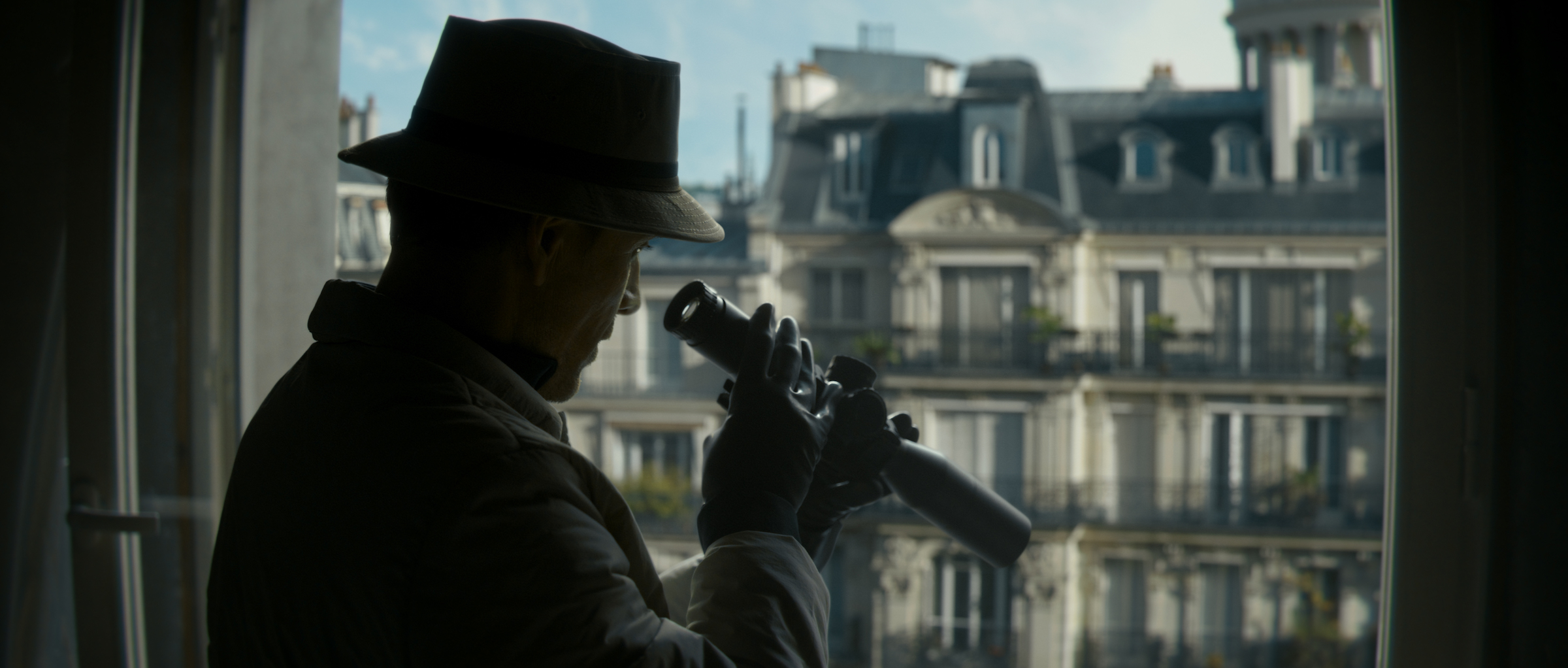
If you’ve been watching movies for a while, David Fincher’s The Killer—playing in competition at the Venice Film Festival—might be your 100th movie about a contract killer, or maybe even your 500th. It’s a genre that springs eternal, but rarely do modern directors stick to the basics; they think they need to make these stories more elaborate and convoluted to keep an audience engaged, when maybe the opposite is true. That’s what makes Fincher’s movie a cut above. Instead of overloading his story with fussy layers, Fincher pares everything back to the genre’s essence. What we’re left with is a killer and his conscience, or whatever he’s got that might pass for one. Somehow, in Fincher’s hands, that narrowed focus expands the genre’s possibilities rather than shrinking them—especially with an actor like Michael Fassbender at the center of it all, playing a radiantly ruthless killer with no name and no shame.
Or at least that’s what this murderer-for-hire wants us to believe. In the picture’s extended, languorous-but-taut opening, Fassbender’s character—let’s call him Nameless Killer Man—sets up shop in an abandoned Parisian WeWork space, training his sights on a particular window across the street, waiting for a chance to put a bullet in his mark. This means a lot of waiting, and we pass the time with Nameless Killer Man as he runs through an efficient set of yoga poses. He intensifies his focus with music, filtered through earbuds: apparently, he listens to the Smiths exclusively. Then he heads downstairs for some recon on the street, but first he must change out of his bland-glam assassin gear into an even more anonymous-looking outfit: he explains that his head-to-toe beige disguise was modeled on a German tourist he saw in London, “because no one wants to interact with a German tourist.” Through all of this, he spins out streams of assassin wisdom in voiceover. These bons mots include “Trust no one,” “Each and every stop of the way, ask, ‘What’s in it for me?’” and, my personal favorite, “Popeye the Sailor probably said it best: ‘I am what I am.’” Nameless Killer Man has many, many thoughts about his work ethos, and he shares them with us in a kind of interior "monologorrhoea." Is the whole movie going to be this way? It seems possible.
But at last, after more than a day of watching and waiting, stretched out in his upstairs lair, he thinks he’s got his shot—and hits the wrong person. Suddenly, The Killer bursts into a restrained fireball of controlled chaos; Fincher moves through every step of the plot with poetic precision. Nameless Killer Man must act fast. (“WWJWBD?” he asks himself, meaning, he explains helpfully, “What would John Wilkes Booth do?”) He zips off on a motorbike, disposing random bits of his weapon here and there, and at one point executing the classic vrooming-down-the-steps move. He stops off at a gas-station rest room to scrub the atomized nitro off his hands and arms. He boards a plane under the first of many aliases: the name on his boarding pass is Felix Unger. These fake names will become more outlandish as the movie zips along—Howard Cunningham, Reuben Kincaid. Every airport staffer, every banker, every crisp professional he encounters is clearly unschooled in ‘70s American TV, which is a great help when you’re a Nameless Killer Man trying to get away with murder.
Fincher seems to be having a great deal of fun with The Killer. Though he takes it seriously as a piece of action craftsmanship, there’s nothing overserious about it. (The script is by Alexis Nolent and Andrew Kevin Walker.) It turns out that Nameless Killer Man does have a heart, which we discover when he boards a flight to the Dominican Republic and finds out that the person he loves best has, thanks to his mistake, been brutalized by savage baddies. To redress this wrong, he must locate the anonymous individual who ordered the hit he botched, and his vengeful trek takes him to New Orleans (where he wreaks havoc with a recently purchased nail gun), Florida (where he has mercy on a cranky pit bull but spares no sympathy for a thug who’s trying to smash him to bits), and a bedroom community of New York (at which point Tilda Swinton shows up, cool as a stick of spearmint gum). There’s some nifty hand-to-hand combat, shot in tasteful low light—the sight of two silhouettes beating the crap out of one another becomes a kind of shadow-puppetry.
Through it all, Fassbender makes a fine Nameless Killer Man with a Secret Conscience. In his finest sequence, he sits very still, listening closely to the person he loves best, absorbing the reality of just what this person endured to protect his Nameless Killer Man identity. The restrained anguish on his face tells us everything. Even just watching Fassbender walk is a pleasure: he has a lanky, feline stride—it’s hard to imagine he could pass unnoticed on the street, even disguised as a neat but boringly dressed German tourist, but no matter. Like Popeye, he is what he is. Only unlike Popeye, he's much too understated to brag about it.
More Must-Reads from TIME
- Cybersecurity Experts Are Sounding the Alarm on DOGE
- Meet the 2025 Women of the Year
- The Harsh Truth About Disability Inclusion
- Why Do More Young Adults Have Cancer?
- Colman Domingo Leads With Radical Love
- How to Get Better at Doing Things Alone
- Michelle Zauner Stares Down the Darkness
Contact us at letters@time.com